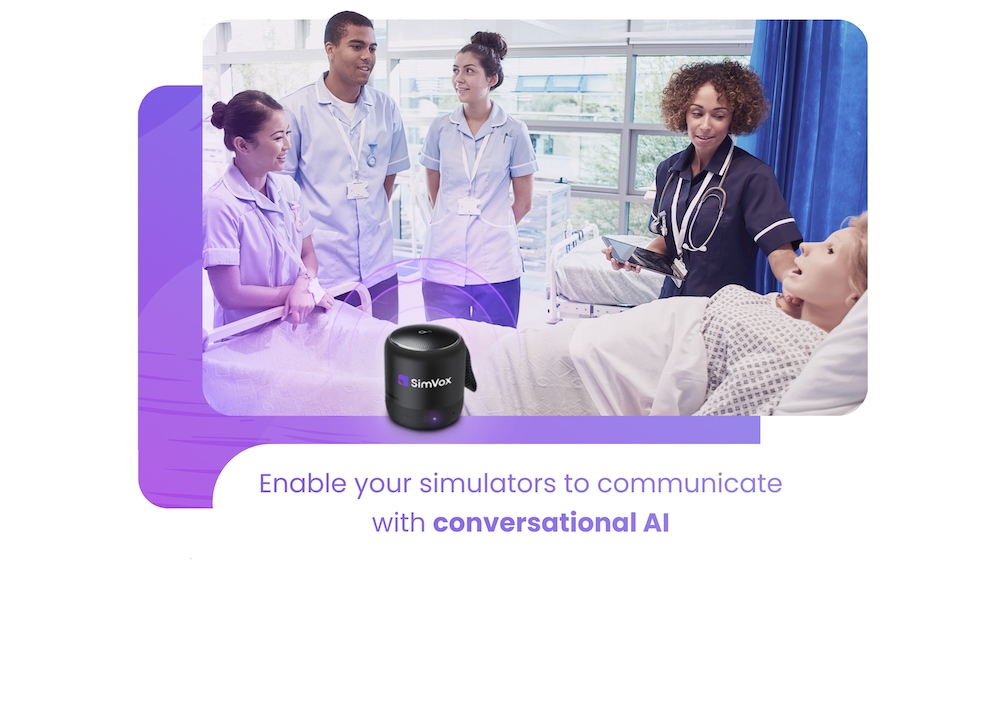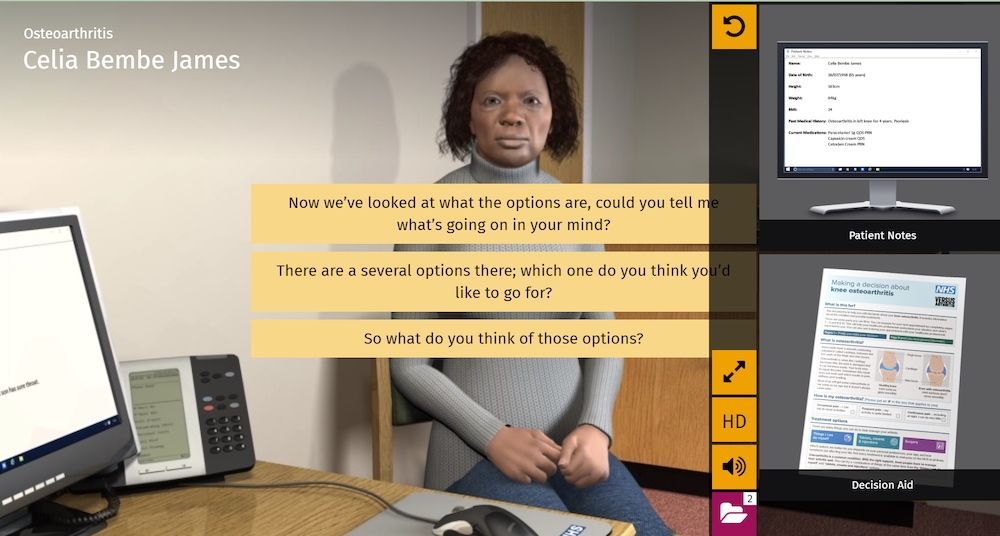Enterprise VR company Immerse recently worked with GE Healthcare to develop a training program for radiographers that simulates the hands-on experience of completing CTCA scans. Justin Parry COO at Immerse recently shared more with us about their VR platform which is already working with some of the world’s largest companies to create, scale and deploy VR training. In particular, they help companies develop VR training programs for when real-life training is very difficult, and traditional training methods are ineffective — sounds perfect for our industry of medical simulation!
The Immerse VEP has been built for enterprise from the ground up, working closely with customers to identify their real needs and applications across multiple sectors. It utilizes an enterprise-grade cloud service for management, deployment and reporting of collaborative VR training applications. Immerse has worked with DHL on a VR platform that trains workers to load shipments to maximize space, for example, and with Shell on disaster training, using VR to simulate an accidental overspill on a storage tanker.
And in the healthcare sector, their platform has helped to solve the difficult problem of how to deliver effective training to medics when equipment is not widely available and cannot be easily taken out of service for training purposes, like with GE Healthcare and radiology training. Their client relationships have been built up over a number of years and demonstrate their ability to apply their VR technology across business sectors. Clients such as DHL, Shell, QinetiQ, GE Healthcare, and TAFE consider Immerse as a long term strategic partner, valuing their ability to not only implement solutions but to also identify and solve key business challenges.
Their shared passion for VR and the opportunity it offers for solving business challenges goes right through their multi-skilled team, from 3D designers, developers, UX to project managers. This passion, coupled with their experience in the learning & development sector, enables them to get up to speed quickly on projects, and to understand industry specific business challenges.
Simulated CTCA Scanning
CTCA scanning is a non-invasive, x-ray based technique that can help detect those at high risk of developing acute coronary syndromes with almost 100% accuracy. It is still a relatively new technique, and it can only be performed using more modern CT scanners; there are currently only 228 cardiac capable scanners in the UK. This means that there are very few radiologists trained in CTCA: as of 2014, the UK had just 48 CTCA-trained radiologists per million population. So although the UK’s National Institute for Health and Care Excellence (NICE) updated its guidelines in 2016 to recommend that all patients with chest pain should be investigated using CTCA, achieving this in practice is proving difficult.
The problem is compounded by the fact that in the UK there is no formal, consistent training pathway for CTCA scanning. Training is usually limited to three to five days of offsite training, generally consisting of lectures, reading and case study reviews.
GE Healthcare saw an opportunity for VR training, and worked with Immerse to create a VR environment that clinically simulates the hands-on experience of completing CTCA scans. The Immerse Learning objective was to make a training tool that could be accessed round the clock, reducing the need for onsite training, lowering training costs and minimizing health risks to patients. Ultimately, this will mean that more radiographers are CTCA trained, leading to better patient assessment and better outcomes.
Working closely with cardiology and CTCA-trained radiographers, we developed a detailed VR environment with various play-through modules, case studies and patient types. First-time users are given a brief tutorial, and then directed to begin the fully guided ‘learn’ mode with the ‘textbook patient’, followed by freer ‘practice’ modes. For future versions, a third ‘assessment’ mode is planned, for users to run through the simulation unguided.
The user flow includes talking to the patient, attaching leads to them, and positioning them in the scanner. For acquiring the final scan images, there is a fully simulated software interaction flow. The design is generic enough that it can be applied to any scanner. Data from the session is fed into Immerse’s reporting platform for further analysis and playback.
Users can make mistakes in a safe environment, and they have 24/7 access to the tool. Medical professionals have the same experience wherever they’re based and whenever they’re available, and employers can be sure that all staff are receiving the same level of training through standardized healthcare simulation.
Engaging, Data Rich Training
The reaction to the VR program during beta testing has been positive: many trainees have reported on the ease-of-use and the detail of the simulation. And the wealth of data captured by the platform is hugely valuable too: all actions in the program are tracked in real time, enabling instant review and feedback. Data can be collected on an individual as well as an aggregate level, so that simulations can be personalized to suit individual users. The wealth of data insights can help employers to track progress, measure outcomes, and tailor future training, and in the future these data insights could be used to build a more formalized assessment tool.
This project demonstrates how a realistic VR training simulation can help overcome barriers to medical training like access to equipment, time and location limitations. But VR platforms are sometimes met with initial skepticism. Key to successful adoption will be getting the technology into the hands of the key influencers and turning them into advocates. This means working closely with medical professionals to develop VR solutions that are truly useful, relevant and effective.






